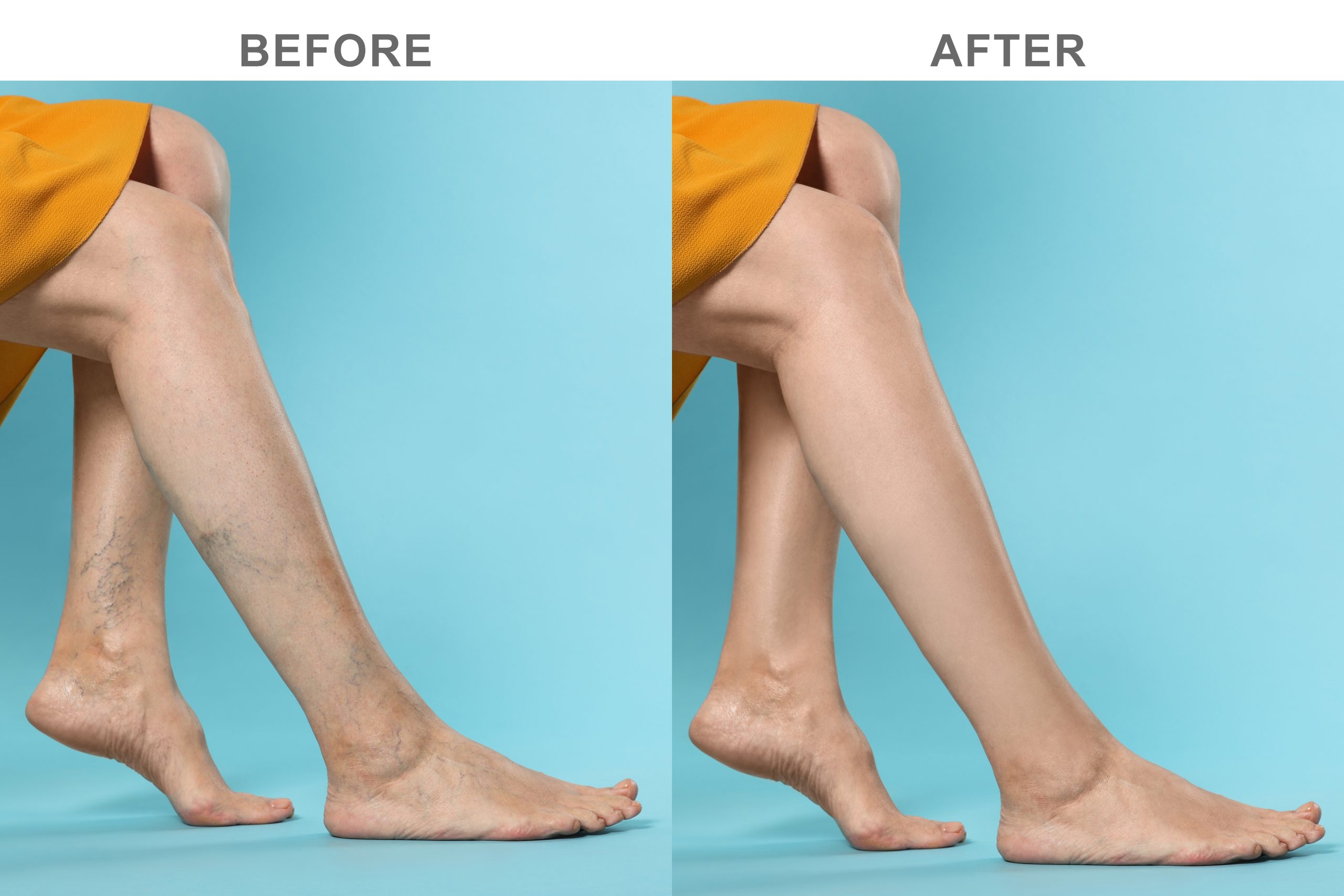Proctology
Path-breaking Laser Technique for Fistula Treatment

by admin
25th October 2023
7 minutes read
Introduction
The advent of laser technology has ushered in a new era in medical science, particularly in the treatment of fistula, a painful anal condition. The path-breaking laser technique offers a less invasive, more efficient alternative to traditional surgery. By employing laser energy, the procedure meticulously closes the fistula tract, promoting faster healing with minimal pain and discomfort. This state-of-the-art method significantly reduces the risk of infection and recurrence, ensuring a higher success rate in treatments. The minimal downtime and the enhanced precision offered by laser technology herald a revolutionary approach in fistula management, marking a significant stride towards better patient outcomes and improved quality of life.
What are Fistulas?
Fistulas are abnormal connections between two surfaces or organs, often developing due to infection, surgery, or conditions like Crohn’s disease. In cases like anal fistula, it manifests as a small tunnel connecting the anal gland to the outside skin. Symptoms often include pain, redness, swelling, and discharge from the affected area. The modern advancement of laser technology in the medical field has introduced a less invasive, more effective treatment. The laser treatment for the fistula involves channeling laser energy to seal the fistula tract, promoting faster healing with minimal discomfort.
What are the Causes of a Fistula?
Fistulas can arise due to various underlying conditions and factors. Here are some causes of fistula formation:
Infection and Abscesses:
- Infections can lead to abscess formation, which, if not properly drained, may result in a fistula. For instance, an anal abscess can lead to an anal fistula.
Surgery:
- Surgical procedures can sometimes lead to the formation of fistulas, especially if there’s a post-operative infection or improper healing.
Crohn’s Disease:
- Crohn’s disease, a type of inflammatory bowel disease, can cause severe inflammation of the digestive tract, leading to fistula formation between different parts of the intestine or between the intestine and other organs.
Radiation Therapy:
- Radiation therapy for cancer treatment can sometimes cause tissue damage and result in fistula formation.
Trauma or Injury:
- Physical trauma or injury can cause fistulas if there is a penetrating wound that pierces through organs or tissues.
Diverticular Disease:
- Diverticulitis, an inflammation or infection of small pouches in the colon, can cause fistulas between sections of the bowel or between the bowel and other organs.
Obstetric and Gynecological Conditions:
- Complications during childbirth or gynecological surgeries can lead to the formation of fistulas. For instance, a difficult or prolonged labor might cause an obstetric fistula.
Tuberculosis (TB):
- Tuberculosis, especially when it affects the gastrointestinal tract, can lead to fistula formation.
Cancer:
- Certain cancers or tumors can erode through tissues and create abnormal connections, leading to fistula formation.
The precise mechanisms of fistula formation can be complex and may involve a combination of these and other factors. Identifying and treating the underlying cause is crucial for effective fistula management and prevention.
How are Fistulas Treated?
The treatment for fistulas depends on their location, cause, and severity. Here are some common treatment approaches:
Surgery:
- Surgery for fistula is a common treatment , aiming to remove the fistula tract and repair the affected tissues. The procedure may include a fistulotomy, where the fistula tract is opened and flattened out, or a fistulectomy, where the fistula tract is completely removed.
Laser Surgery:
- Laser treatment for fistulas in bangalore is a minimally invasive technique. It involves the use of laser energy to seal the fistula tract, which promotes faster healing with minimal scarring, pain, and recovery time compared to traditional surgery.
Seton Placement:
- A seton is a piece of surgical thread that is placed in the fistula tract to help keep it open and allow it to drain. Over time, this can help the tissue to heal around the seton.
Advancement Flap Procedure:
- In this procedure, a flap of healthy tissue is used to cover the internal opening of the fistula. It’s a more complex procedure that may be used for higher or more complex fistulas.
Fibrin Glue and Collagen Plugs:
- Fibrin glue or collagen plugs can be used to seal the fistula tract. They are less invasive options but may have a higher rate of recurrence compared to surgical interventions.
Medication:
- Medications, such as antibiotics, may be prescribed to treat any underlying infection. In cases of Crohn’s disease, immunosuppressive medications may be employed.
Infliximab:
- Infliximab, a type of anti-TNF medication, may be used for treating fistulas in individuals with Crohn’s disease.
Hyperbaric Oxygen Therapy (HBOT):
- Though not a common treatment, HBOT can sometimes be used to enhance the healing of fistulas, particularly in individuals with radiation-induced fistulas.
Drainage:
- Initial drainage of an abscess, if present, is critical to relieving symptoms and promoting healing.
The choice of treatment depends on various factors including the patient’s overall health, the type, and location of the fistula, and the expertise of the medical team. It’s important for individuals to discuss with their healthcare provider to determine the most appropriate treatment plan for their situation.
Advantages of Laser Technique for Fistula Treatment
The use of laser technology in the treatment of fistulas presents numerous advantages over traditional surgical methods. Here are some of the notable benefits:
Minimally Invasive:
Laser treatment for fistula is a minimally invasive procedure. This leads to less trauma on the surrounding tissues compared to traditional surgery.
Reduced Pain and Discomfort:
Patients often experience less pain and discomfort during and after laser surgery. The precision of laser energy minimizes damage to surrounding tissues, which in turn reduces post-operative pain.
Faster Recovery:
The recovery time for anal fistula treatment is significantly shorter in laser surgery for fistula as it promotes faster healing due to its minimally invasive nature.
Lower Risk of Infection and Complications:
The precision and minimal incisions associated with laser treatment reduce the risk of postoperative infection and other complications.
Less Scarring:
Laser treatment is known to cause less scarring as it involves fewer and smaller incisions compared to traditional surgical methods.
Higher Success Rate:
Many studies have shown a higher success rate with laser treatment for fistula in terms of closure of the fistula tract and lower recurrence rates.
Enhanced Precision:
Laser technology allows for enhanced precision in targeting the fistula tract and sealing it, without causing much damage to surrounding tissues.
Outpatient Procedure:
Laser treatment for fistula is often performed as an outpatient procedure, allowing patients to return home on the same day, which can be preferable for many patients.
Improved Quality of Life:
With less post-operative pain, quicker recovery, and lower recurrence rates, patients often experience an improved quality of life post-laser treatment.
Reduced Hospital Stay and Medical Costs:
The quicker recovery and outpatient nature of the procedure could potentially lead to reduced hospital stays and, in some cases, lower overall medical costs.
Conclusion
The advancement of laser technology in the medical arena has proven to be a boon, especially in the treatment of fistulas. The laser treatment for fistula offers a minimally invasive alternative to traditional surgical procedures, marking a significant stride in medical technology. This technique not only promotes faster healing but also substantially lowers the risk of infection and recurrence, which are often associated with conventional surgeries. Patients benefit from reduced pain, lesser scarring, and a quicker return to normalcy, enhancing their overall quality of life.
FAQs
1. What is the difference between a fistula and an abscess?
An abscess is a collection of pus that has built up within the tissue, whereas a fistula is an abnormal connection between two surfaces. An abscess can lead to fistula formation if it burrows through nearby tissues and creates a tunnel.
2. Can diet impact fistula healing or prevention?
While diet alone cannot heal a fistula, a balanced diet can support overall health, potentially aiding in the healing process post-treatment and preventing infection.
3. Are there alternative non-surgical treatments for fistulas?
Non-surgical treatments may include medication to treat underlying conditions, seton placement, or fibrin glue. However, their effectiveness compared to surgical or laser treatments may be lower.
4. What is the post-operative care required after laser fistula treatment?
Post-operative care may include keeping the area clean to prevent infection, taking prescribed medications, avoiding strenuous activities, and following up regularly with the healthcare provider to monitor healing and any potential complications.
5. Can a fistula heal on its own?
It’s rare for fistulas to heal on their own, especially without medical intervention. Treatment is often necessary to prevent complications and alleviate symptoms.
CATEGORIES
- ACL Reconstruction
- Anal Fissures
- Anal Fistula
- Appendicitis
- ASK A DOCTOR
- Benign Prostatic Hyperplasia
- Breast Lump Excision
- Cataract
- Circumcision
- Conditions & Diseases
- Cosmetology
- Covid-19
- Cure
- Endocrinology
- ENGLISH VIDEOS
- Eye Care
- Gallstones
- General Surgeries
- Government Schemes
- Gynaecology
- Gynecomastia
- Health
- Health Insurance
- Hernia
- Hindi
- Hip Arthoscopy
- Hip Replacement
- Hip Replacement Surgery
- Hydrocele
- Kannada
- Kidney Stones
- Knee Arthroscopic
- Laparoscopic
- LASER
- Latest Treatments
- Lifestyle
- Liposuction
- Medfin Stories
- Medicine
- Nephrology
- Ophthalmology
- Orthopaedic
- Paraphimosis
- Patient Testimonials
- PCL Reconstruction
- Phimosis
- Piles (Hemorrhoids)
- Pilonidal Sinus
- Proctology
- Prostate Artery Embolization
- Rhinoplasty
- Second Opinion
- Total Knee Replacement
- Urology
- Uterine Artery Embolization
- Uterine Fibroids
- Varicocele
- Varicose Veins
- Vascular
- VIDEOS







